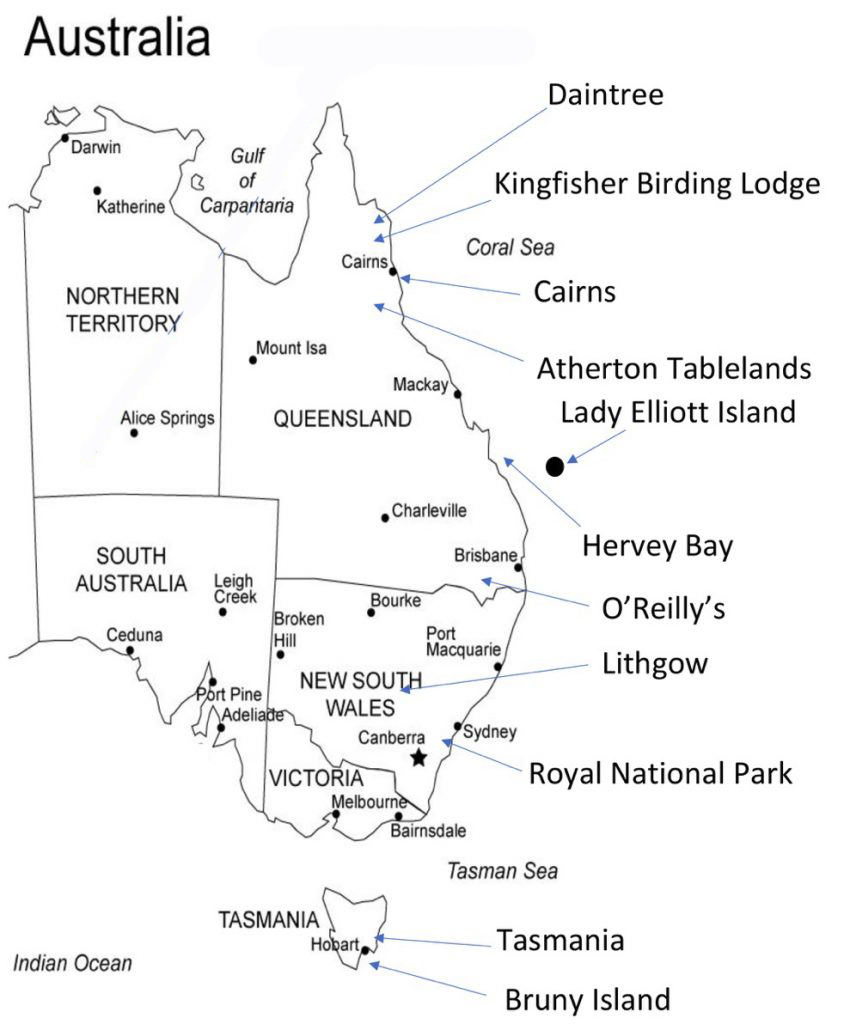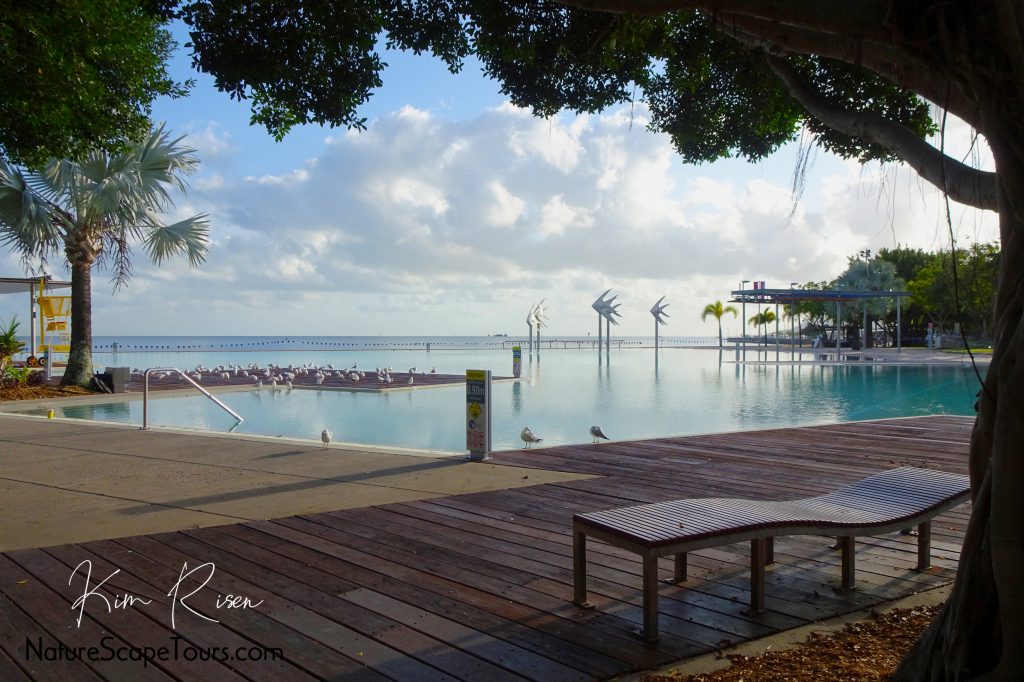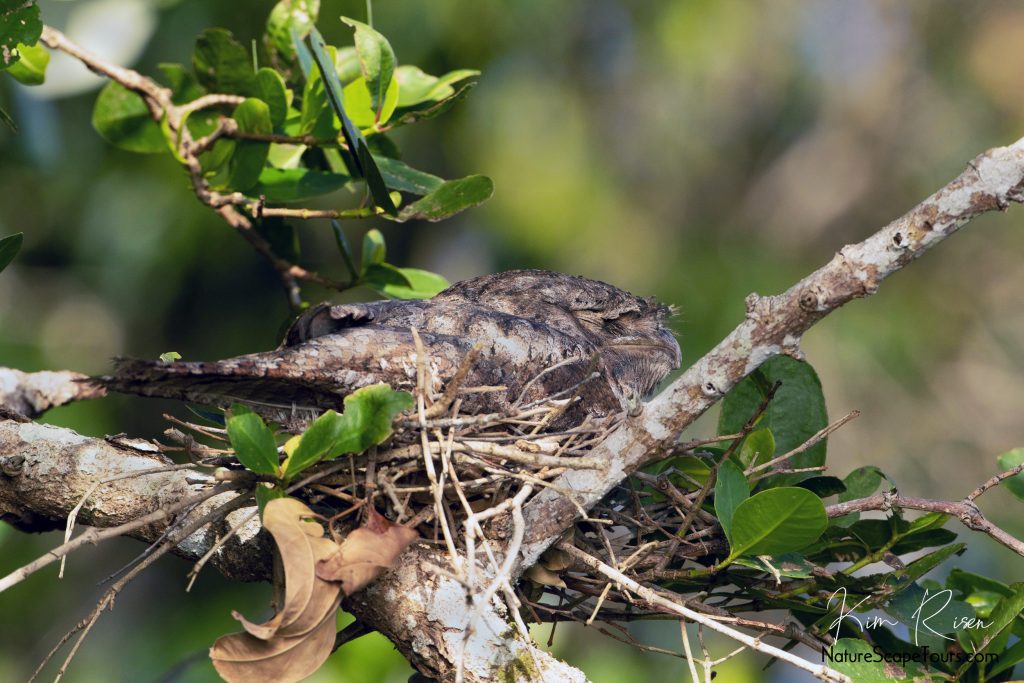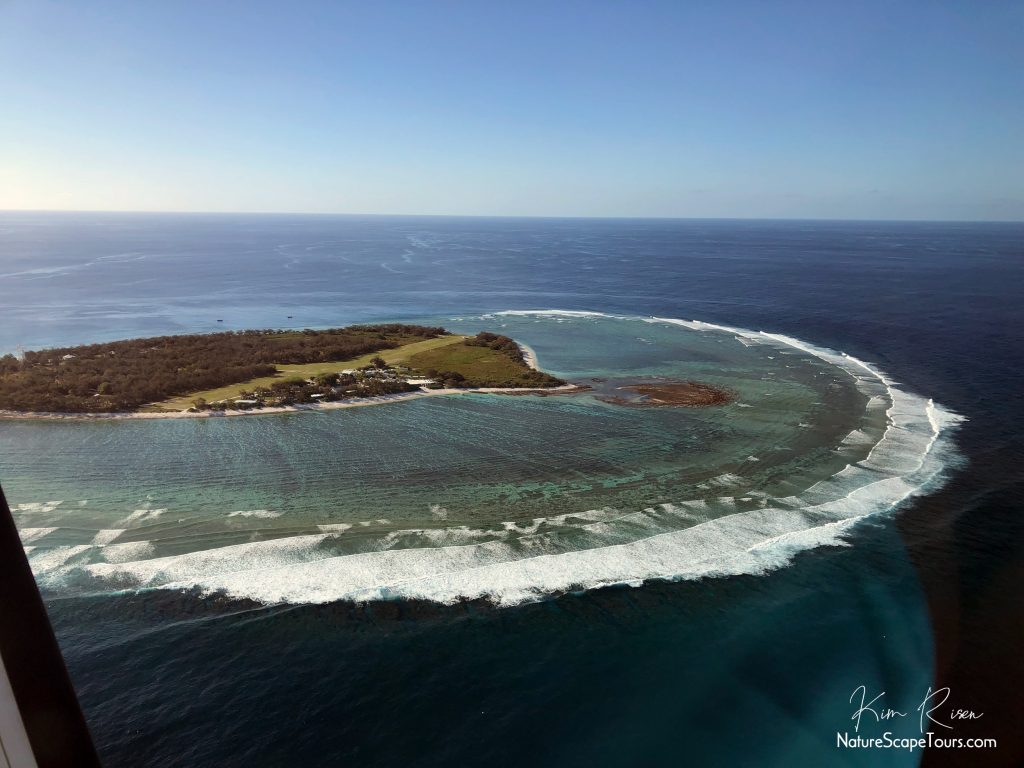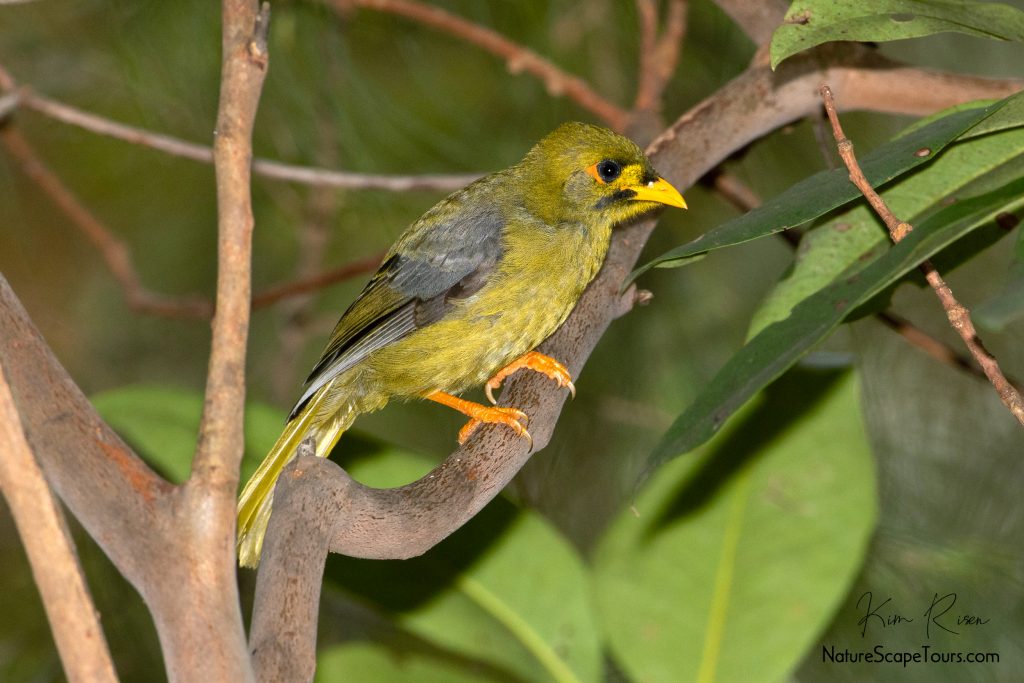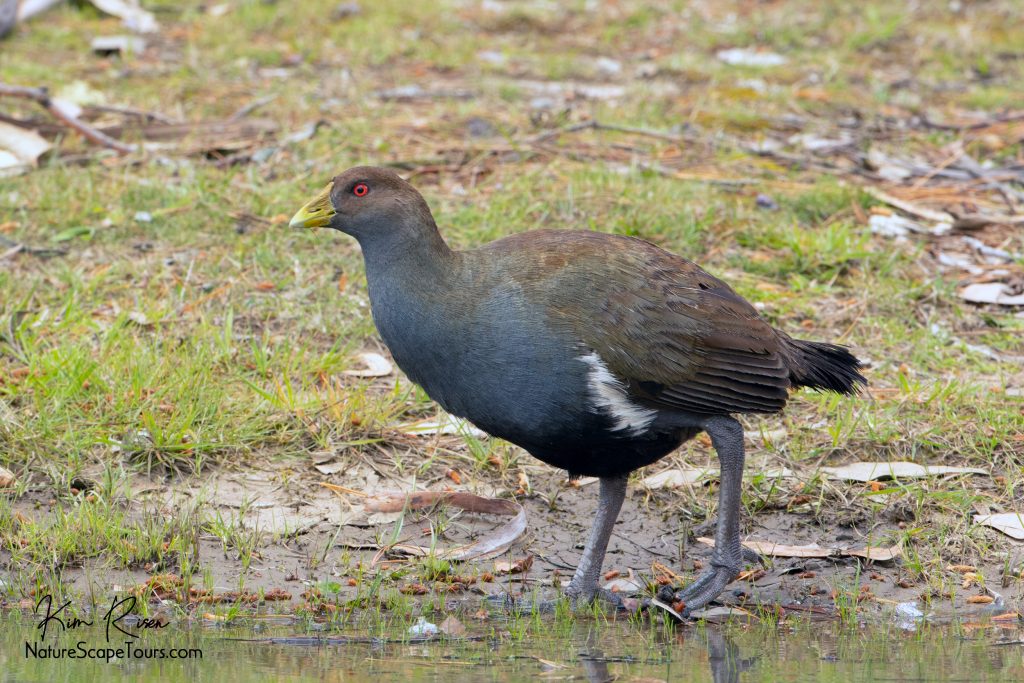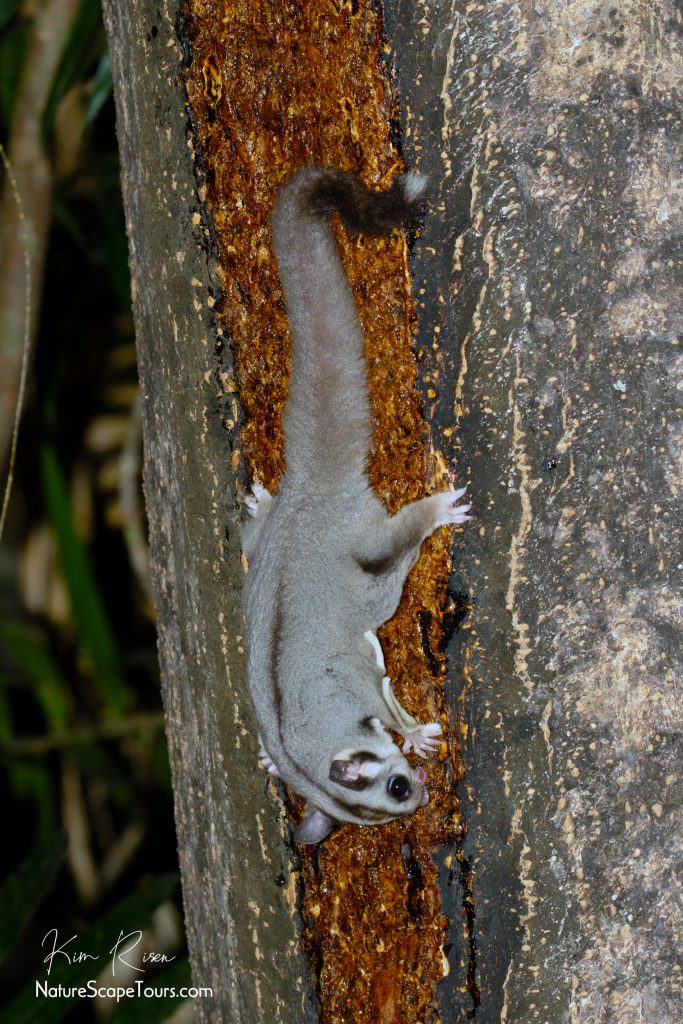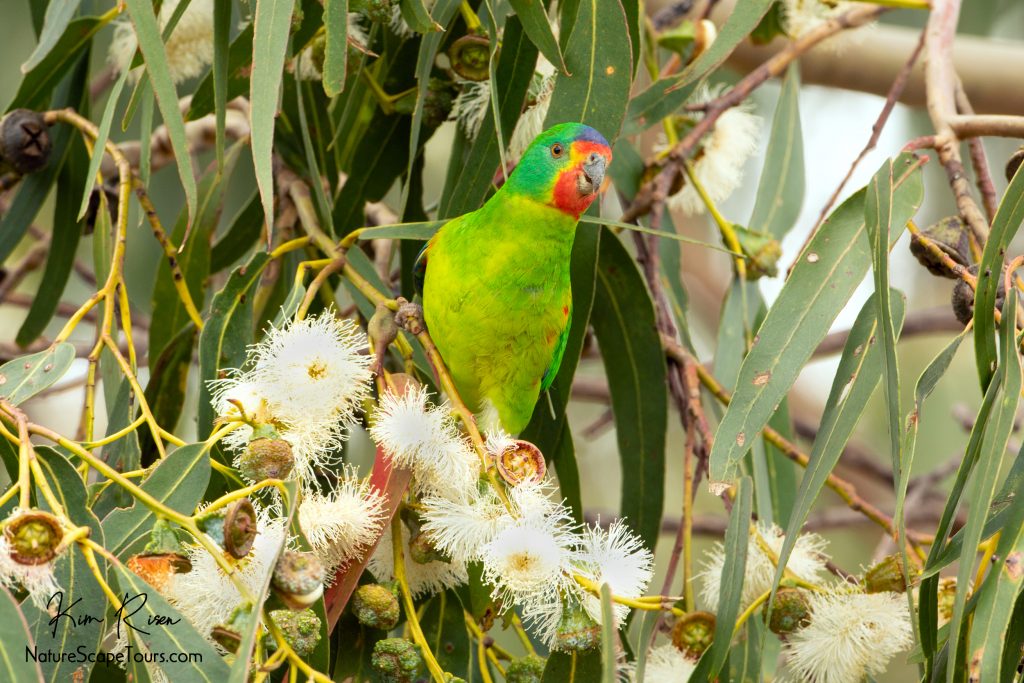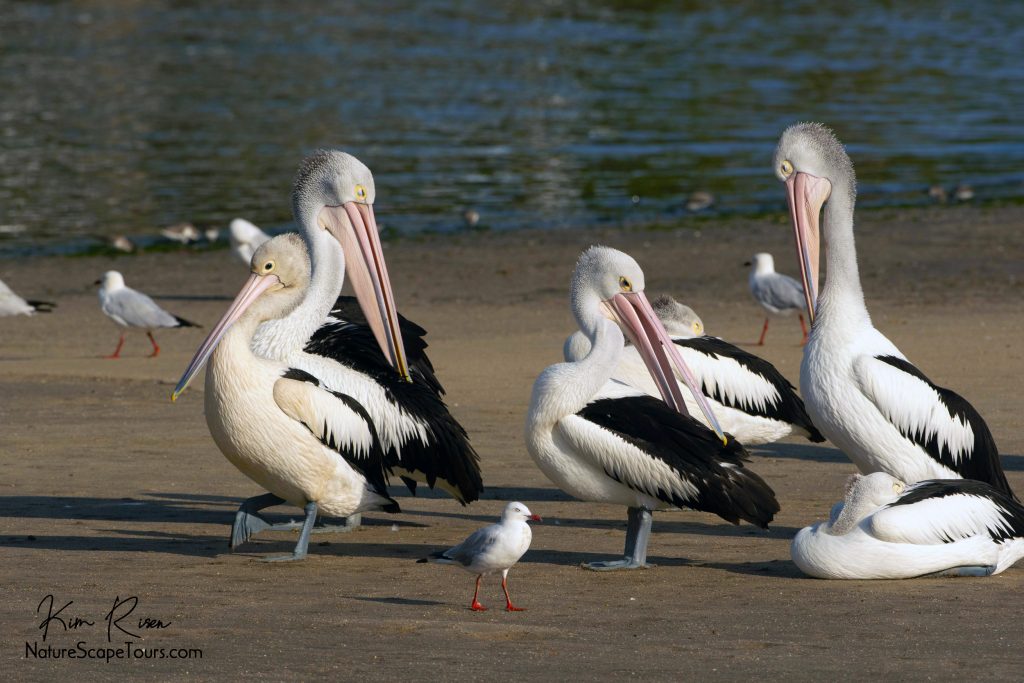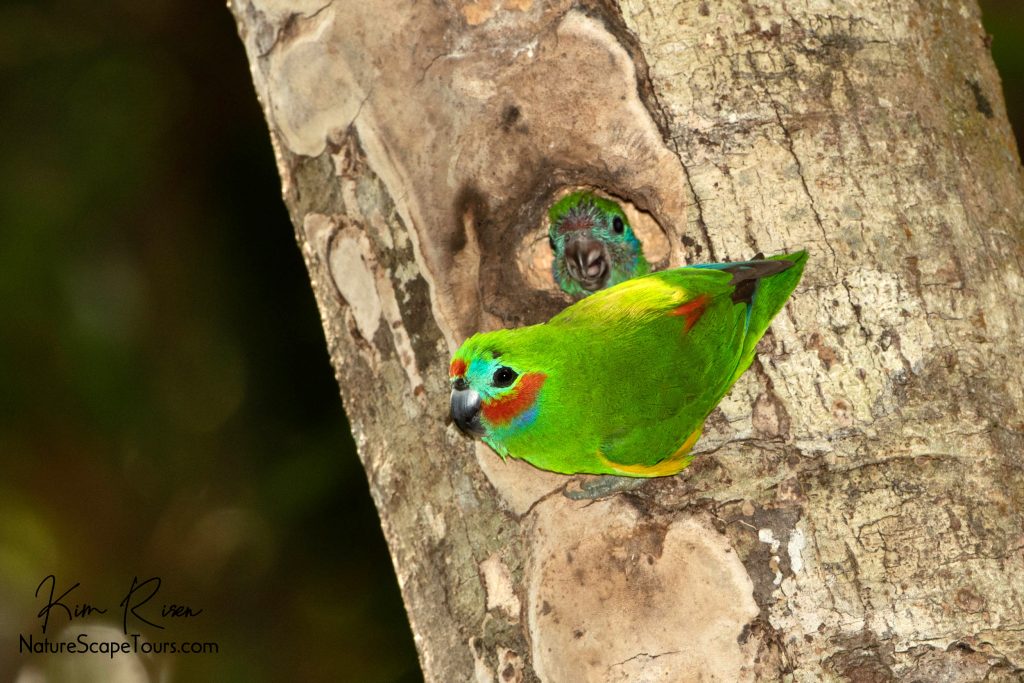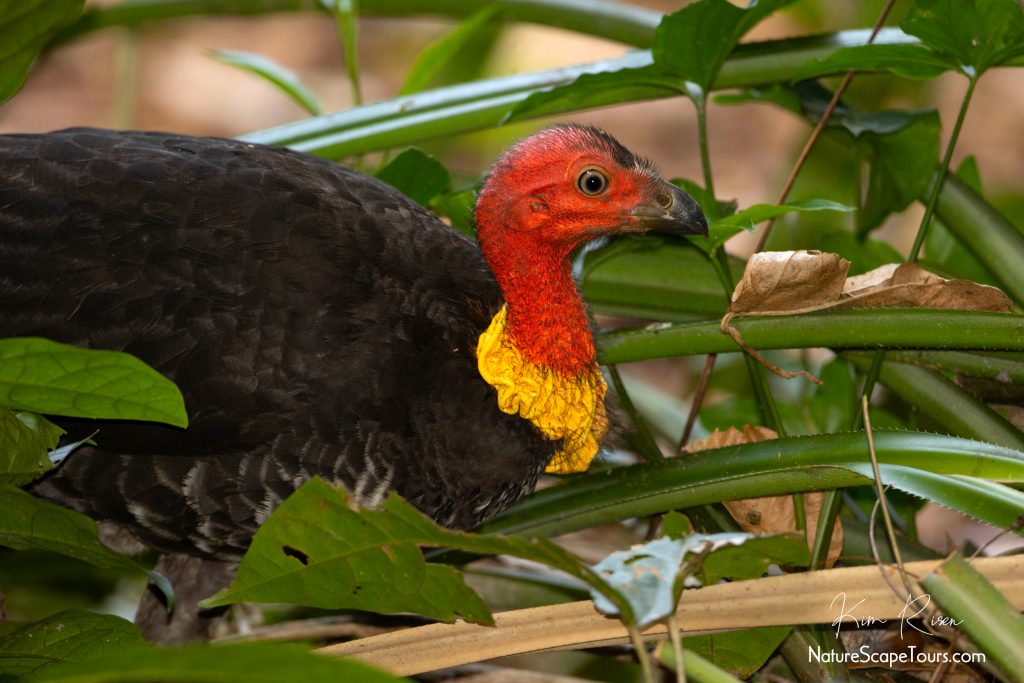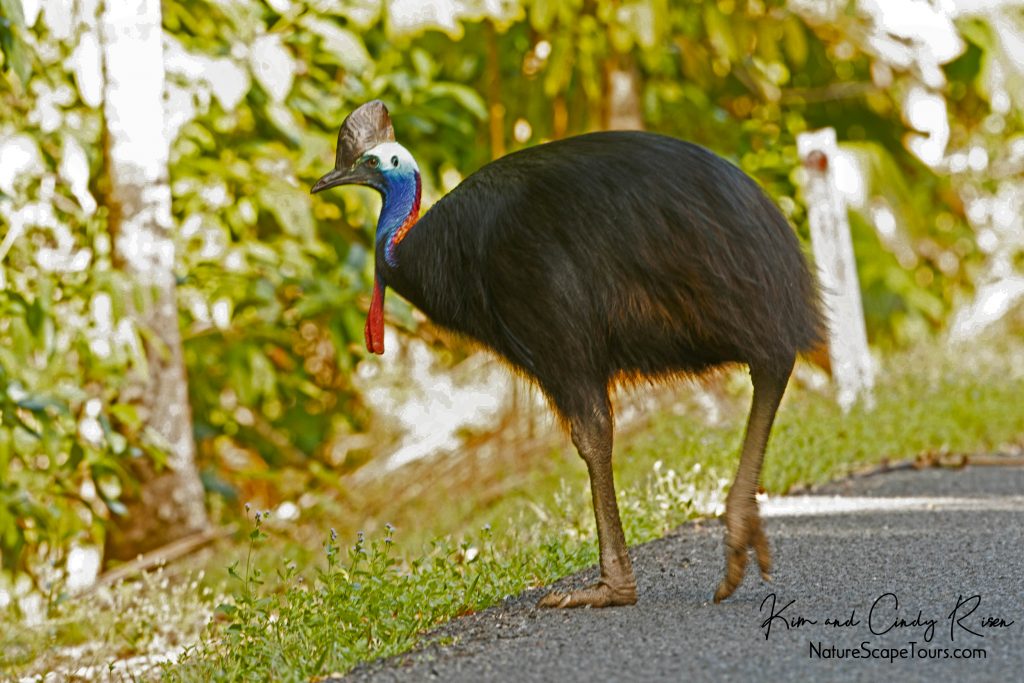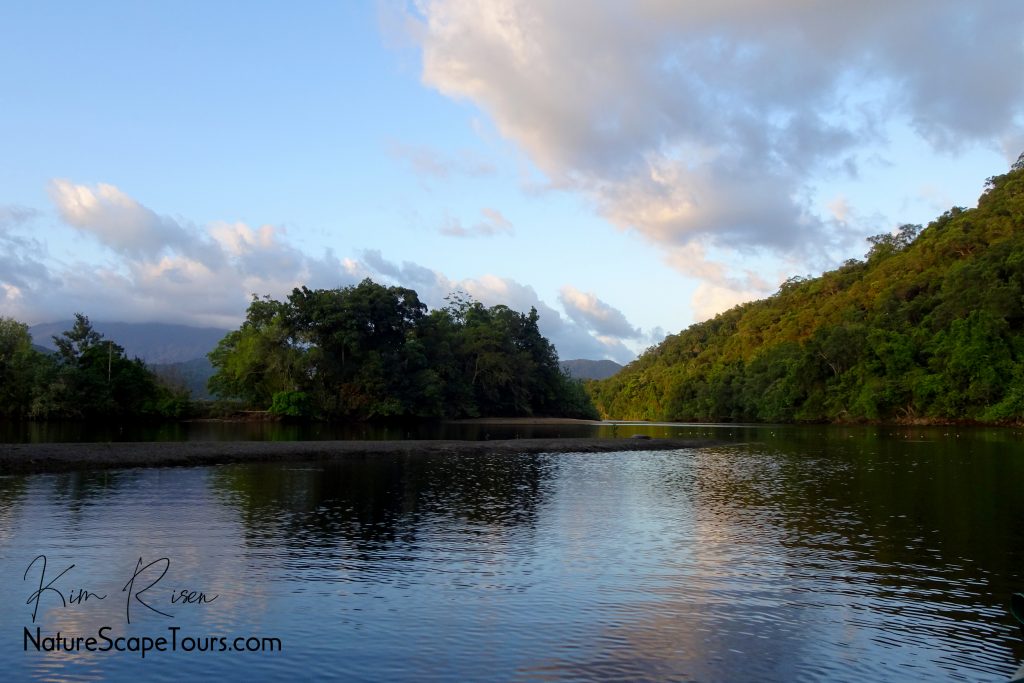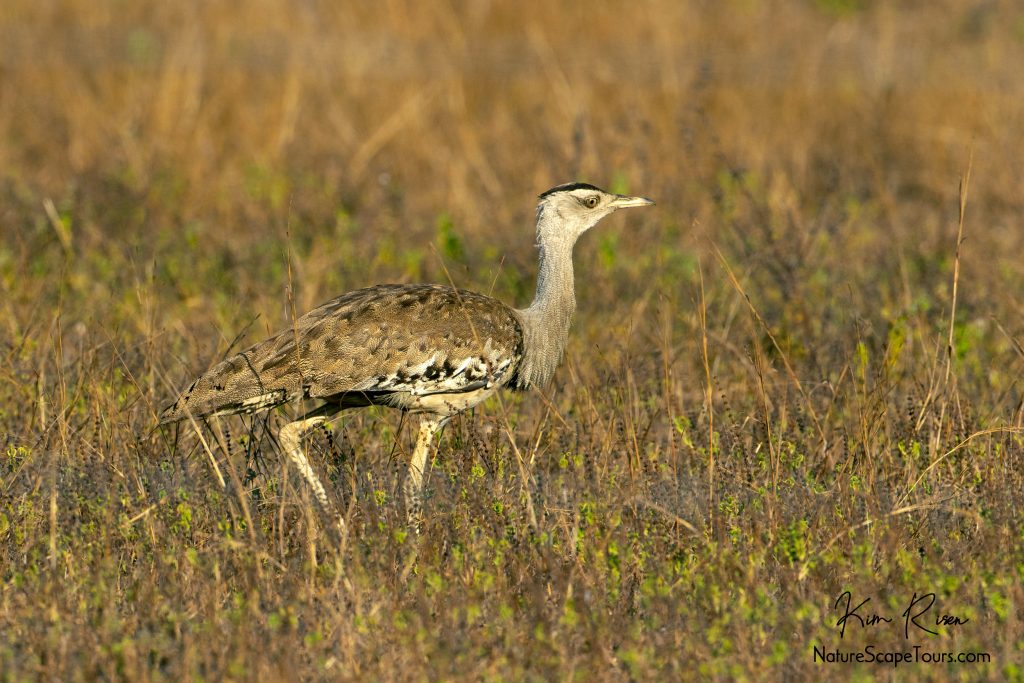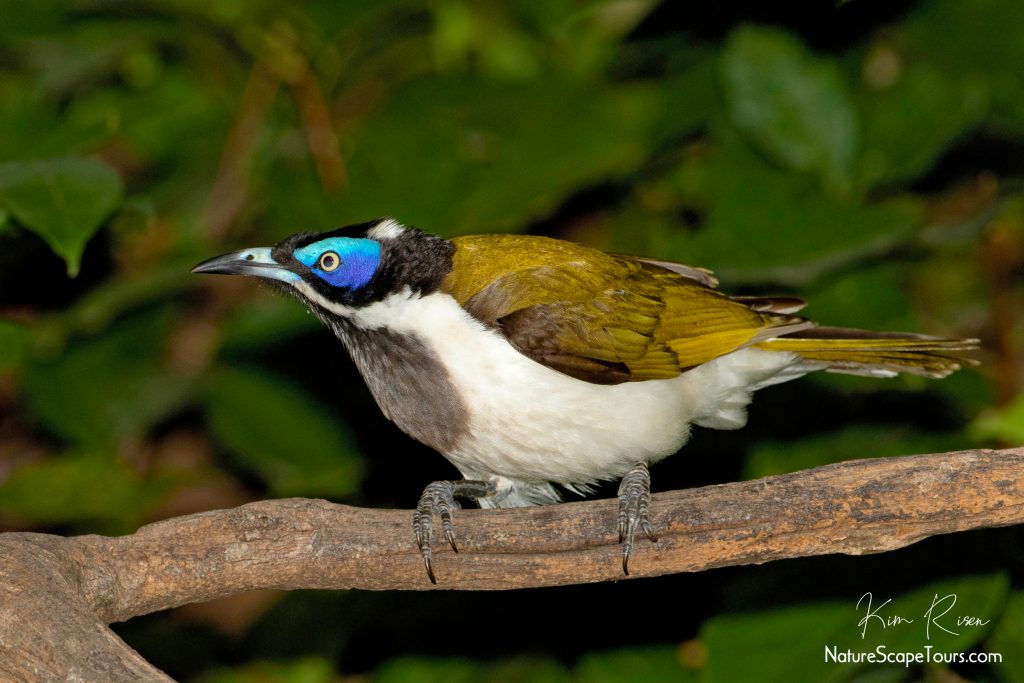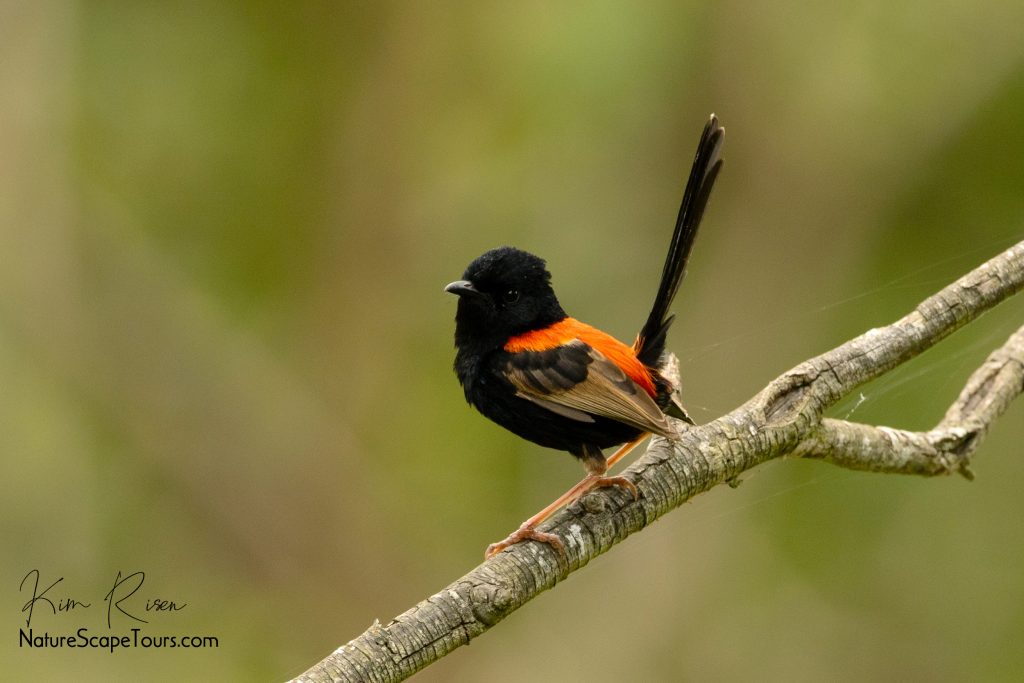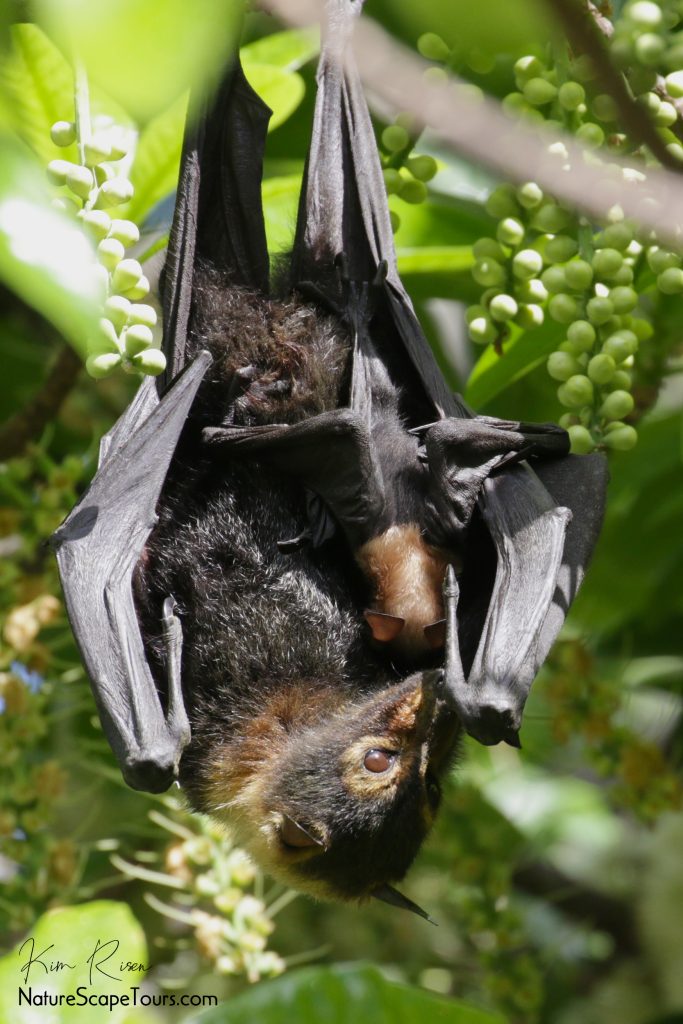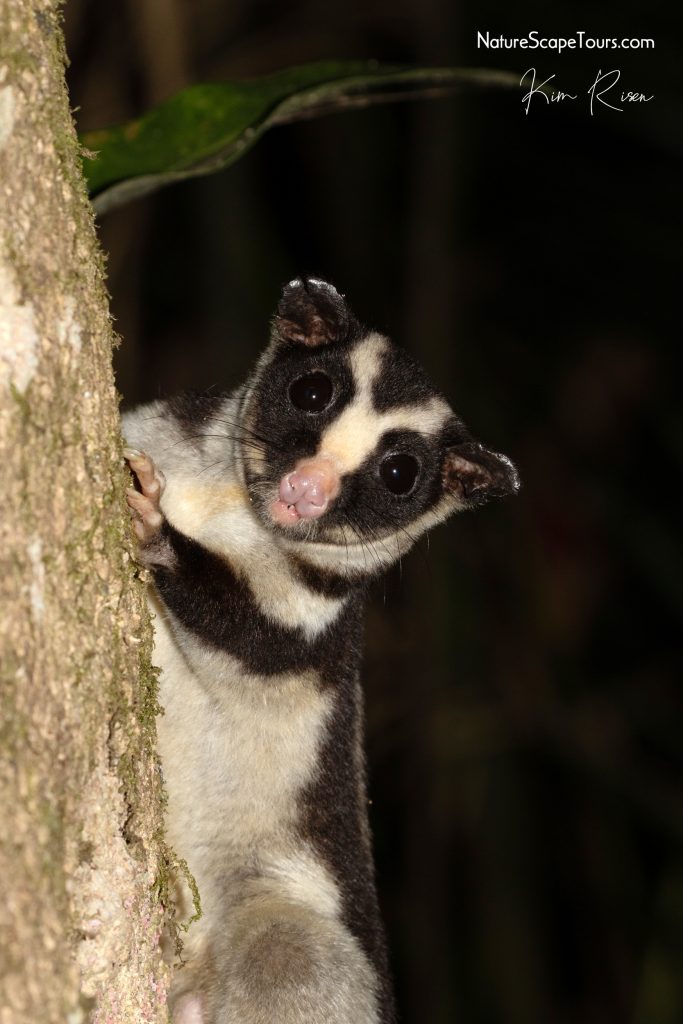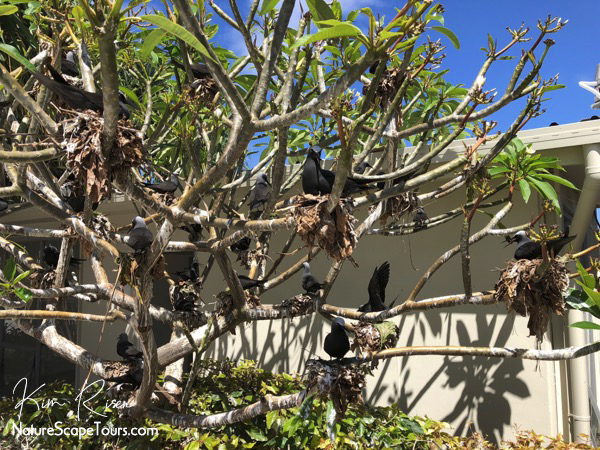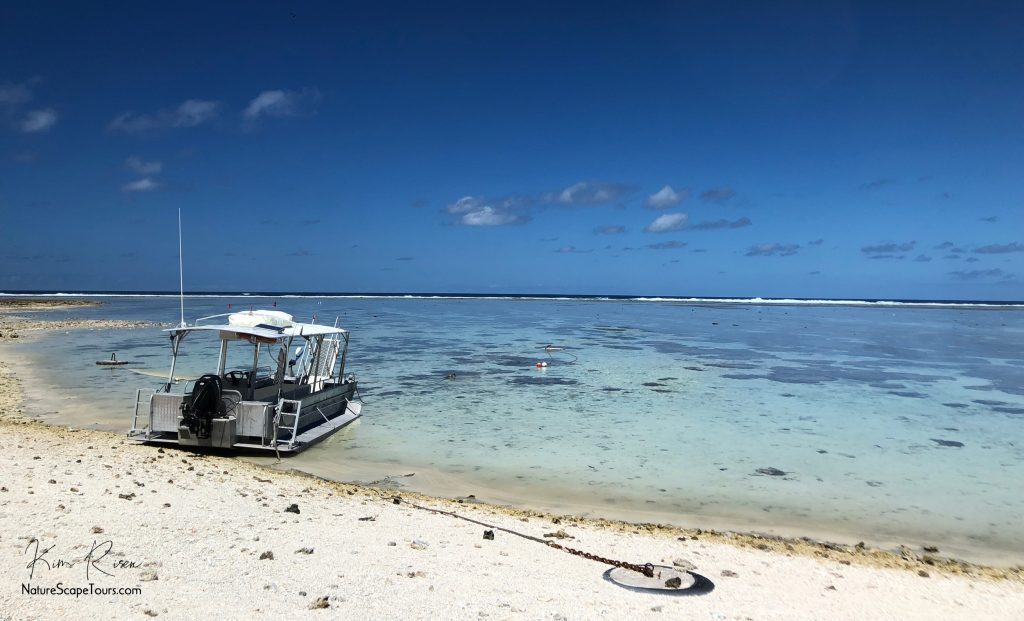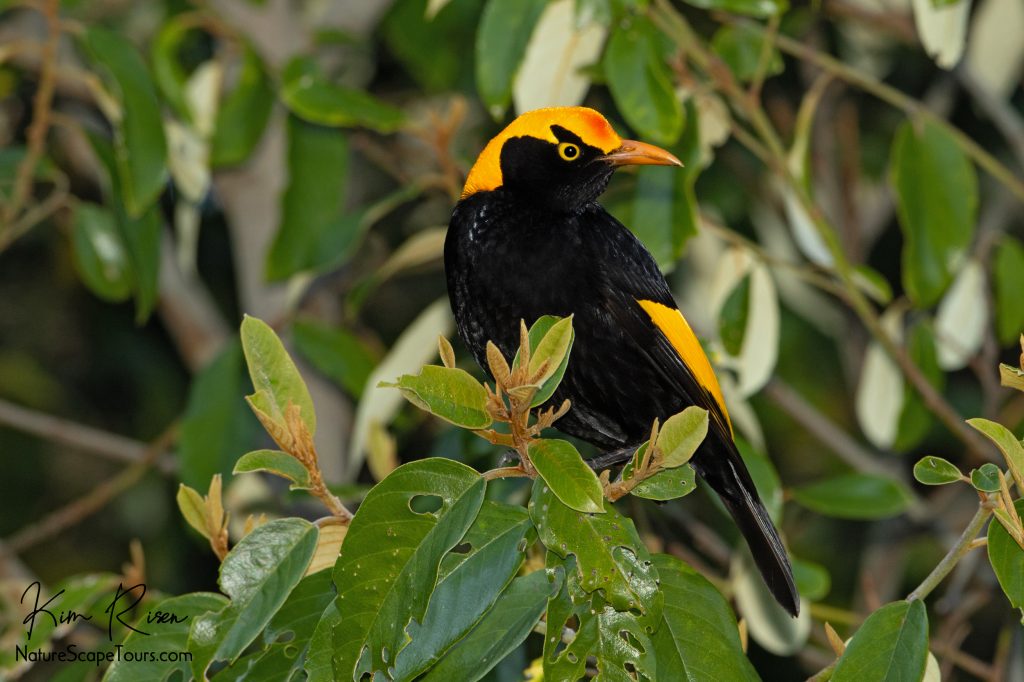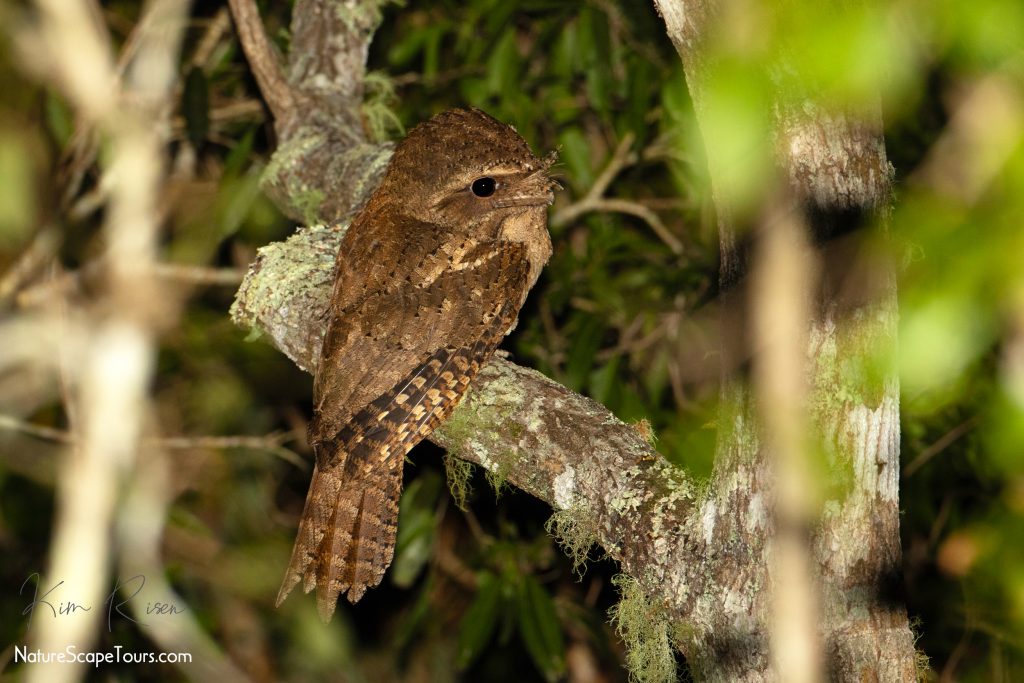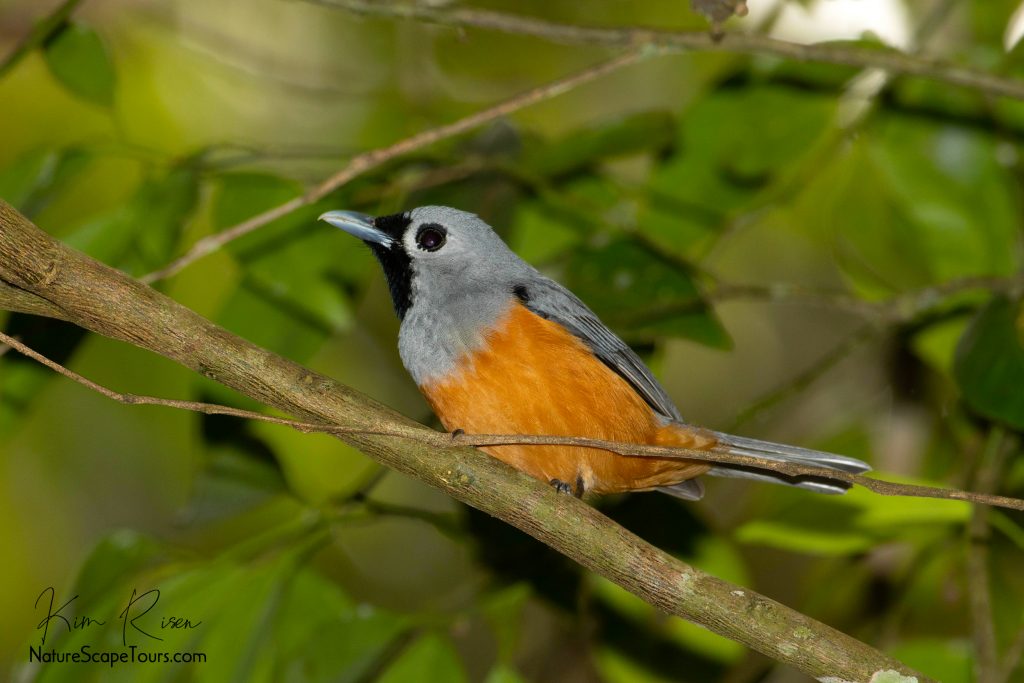ARRIVAL IN AUSTRALIA: Your tour begins upon your arrival at the Sydney airport the afternoon of Thursday, September 27, 2019. You will be met by your leader, Kim Risen, outside the baggage claim area. Sydney is located on the southeastern coast of Australia, while the airport is located just south of the city center.
ENTERING & LEAVING AUSTRALIA: After arriving in Sydney, you will be required to pick up your baggage before departing the airport. After picking up your baggage, we’ll meet you outside the baggage claim area where we’ll load our vehicle and depart immediately for a bit of light birding/sight-seeing before checking into our hotel…depending upon how folks feel. Checking into our hotel and getting as much rest as possible before returning to the airport and your flights to Alice Springs the next morning might feel like a better option once you arrive in Australia.
DEPARTURE FROM AUSTRALIA: Please note, upon our tour’s conclusion, your departure flights from Sydney on October 28, 2019 can depart any time of day that best fits your schedule or travel preferences. There are no group activities planned for this last day as most return flights to the US depart too early for us to provide group offerings. This tour ends the morning of October 28, 2019 at our hotel in Sydney or upon your return to the airport in Sydney.
TRAVEL DOCUMENTS: In order to visit Australia, a passport that is valid for at least six months beyond your planned date of departure and an Electronic Travel Authorization (ETA) is required to enter Australia for citizens of most countries including the US and Canada.
Obtaining your ETA is easily accomplished on-line. Personally, I’ve found this website to be easy and intuitive to use and priced lower than other options. (I believe my cost was $20 USD last year.)
We recommend having your passport on your person while traveling from one location to another as it may be required to show it to authorities. Never pack it away where it is inaccessible. Good travel advice: you should have two extra copies of the photo page of your passport (one in your handbag and one in your luggage) to cover any situation that may arise. Passports are required to be valid for more than 6 months after the scheduled return date of your visit AND you are required to have at least three empty VISA pages.
TRAVEL WITHIN AUSTRALIA: We travel in vehicles with a window seat for each person, insuring there are no problems with space or comfortable riding for the duration of your tour. Australia is an enormous country and, even though we are limiting ourselves to eastern Australia, we do have some longer drives in order to get ourselves into the best areas for those localized and scarce birds that are so highly desired. As always, participants are welcome to take a morning or afternoon off from group birding activities when we are in those locations where we spend multiple days or at any time doing so does not interfere with the group’s itinerary. Australia’s roads we travel vary greatly in condition. Paved and ‘highway like’ along the coast and foothills, to dirt/rocky tracks through mountainous areas that seem more like bumps atop bumps when traveling in remote locations. Thankfully, these latter drives are not overly long and should pose no problems to our vehicles or our spines. Access roads change continuously under various conditions and can change greatly from month to month based on weather related events. We are prepared for almost anything that may arise so nothing we encounter should prove to be too difficult.
PACE OF TOUR: As is typical with most birding tours, most days will consist of early starts with a quick breakfast. Lunches will be picnic style when we are far from ‘civilization’, or at conveniently located restaurants. Dinner will be our most relaxing meal of the day, usually at a restaurant close to our hotel. Dinner usually begins with a ‘cocktail hour’ as we complete a checklist of the days bird sightings.
This birding tour is designed to find as many of the interesting Australian animals, birds and endemic or near endemic birds of eastern Australia as possible. We WILL attempt to see many of Australia’s nightbirds and nocturnal animals found in the areas we visit, so there will be some optional night outings to look for them. Remember, this may make some days a bit long but the avian and mammalian rewards can be quite high!
There is decidedly an emphasis placed upon seeing all of the special birds and animals found in each of the areas we visit. Accordingly, this tour has a fair amount of driving. In order to cover a wide range of habitats, we often need to travel longer distances to reach specialty habitat pockets. Fortunately, we have only a couple of these long drives on our route and they are broken up by birding breaks or meals so they shouldn’t prove to be too difficult. For your driver, guide OR participants! Fair warning, we WILL become quite familiar with our vehicles, packing lightly will enable you to enjoy your time more fully.
This tour is not a strenuous one. There are no particularly long walks and anyone with a reasonable degree of fitness will be able to participate fully in the tour. While visiting Tasmania’s mountains we reach altitudes of only around 5,000 feet. When we’re at these higher altitudes, some days may have fog, rain, snow and the ever-present wind, or any combination of these. Terrain and altitude can make these days of walking a bit more difficult than other locations we visit. Loose, rounded gravel and grass tussocks up high, snow, slush, puddles, hummocks may make walking a bit more difficult than normal. Elsewhere conditions are superb with no long or strenuous hikes required. Short walks along the beach may prove to be the most difficult terrain we encounter!
Unlike most NatureScape Tours events, there IS a bit of time available for sightseeing or shopping as a group activity in order to experience as much of Australia as possible. Your best chances of ‘non-birding time’ are going to be found during our multiple day stays throughout the tour OR in Sydney before or after the tour’s start.
INTRODUCTION: Due to the arrival time of our group, we’ll have our introductory meeting during dinner our first evening together in Sydney. This meeting provides the leader an opportunity to introduce himself to the group, make introductions among participants and let participants know what to expect during the tour (pace, conditions, daily routine, etc.)
HEALTH: While international travel often has a number of health concerns, travel to Australia is relatively straight forward with few hidden dangers.
While Australia has no required vaccinations for entry, it’s always a good idea to be sure your “Travel Shots” are up to date. Such vaccines include measles-mumps-rubella (MMR) vaccine, diphtheria-pertussis-tetanus (DPT) vaccine, varicella (chickenpox) vaccine, polio vaccine and your yearly flu shot. Please discuss your vaccination history with your personal physician in order to bring your routine travel vaccines up-to-date.
Most international travelers will find that the investment of time and effort put into obtaining the Hepatitis A, Hepatitis B and Typhoid Fever series of inoculations offer much and greatly reduce your risks while traveling. We personally use and highly recommend all of these.
Australia has no risk of malaria or yellow fever. The Australian government requires proof of yellow fever vaccination only if you are arriving FROM a country with risk of yellow fever. This does NOT include or apply to those arriving from the US or Canada.
In the tropics one can never completely escape the risk of parasites or fungal infections. And, as described in the miscellaneous column, topical repellants and ointments are recommended equipment to be brought from home.
Sanitary conditions are excellent throughout Australia. Incredibly so! Folks who have traveled across neotropical regions will be relieved to hear that drinking water is completely safe throughout Australia and that upset stomachs are a rare occurrence. Water served in restaurants and hotels is always safe and plentiful. We do recommended that you carry a water bottle with you that can be refilled as needed.
If you plan on participating on our pelagic boat trip and you are susceptible to motion sickness, medication to prevent seasickness may prove most helpful. Many will find that a partial dose the evening before and a full dose first thing in the morning the day of our departure works far better than taking your medication as we board the boat.
Generally, the most common problems we encounter during our Australia tour arise from clients not being prepared for the cold and wind on Tasmania, on our offshore pelagic trip or some nighttime outings. Warm, waterproof outer layer of clothing and comfortable waterproof footwear are essential gear for our Australia tour. Keep in mind, if you stay warm and dry…you’ll be comfortable!
Insects can be a problem at times in some localities along our planned route. Luckily, we’ll miss the worst by a good margin. Generally, this early in the year, biting and stinging insects (ants, wasps, and mosquitos) are only a minor problem. We recommend the use of standard insect repellents with DEET as an active ingredient for chiggers (virtually absent in Australia) and mosquitoes. Note that the Australian Bush Fly, a non-biting, nuisance insect similar to the house fly, can be quite troublesome in certain seasons. Repellents are ineffective against these irritating pests. While they should not pose a problem during our visit, a lightweight head net takes up very little space and will prove very useful if we do encounter swarms.
For years we’ve used the general health information for travelers provided by the U.S. Centers for Disease Control and Prevention (CDC) in Atlanta. They operate a 24-hour Travelers’ Information Line (800) CDC-INFO. Of most use to us has been their information-filled website. You can checkout the CDC website at www.cdc.gov/travel.
Remember, your best source of medical advice should ALWAYS be your personal or family physician!
LANGUAGE: English is spoken throughout the areas we’ll visit and aboriginal dialects may be encountered. Travel to a new destination is best treated as an adventure! We encourage embracing the differences of a new culture and its language. Doing so will make your travel all the more enjoyable and memorable.
CURRENCY: Australia’s currency is the Australian dollar (AUD) which comes in polymer/plastic notes of $5, $10, $20, $50 and $100. Coins are in 5, 10, 20 and 50 cents as well as $1 and $2 denominations. Exchange rate between USD and AUD is relatively stable at around 1.4 AUD to 1 USD.
Remember, your basic expenses during the tour are covered but meals taken at restaurants are NOT. A credit or debit card is likely to be accepted at all of our selected meal venues. However, if you do not like to use a credit card while traveling internationally, you will almost certainly want to have cash money for gift purchases, tips for personal services, those meals not covered by the itinerary, liquor and beverages not included with meals.
Traveler’s checks may make you feel more secure, but recent years have shown them to be difficult to cash or even unaccepted in many areas.
Australian Dollar exchange facilities are available for all incoming and outgoing flights at all international airports. If you wish to exchange USD for AUD, you can easily change money at such airport locations or a city bank. However, the exchange rate is never the best. Remember, your best exchange rate to obtain local currency/AUD is always going to be from the now ubiquitous ATM machines found throughout Australia (as opposed to changing US dollars for Australian dollars at dealers in the airport or at a bank). Don’t forget to contact your bank before traveling, ask them if they partner with any banks in Australia that would allow you to use their ATM’s without a charge and to inform them of your travel plans.
Typical credit cards—Visa, Diners Club, MasterCard and American Express are widely accepted. Please note: Discover credit cards are generally NOT accepted anywhere in Australia. Rarely, credit card use may be a bit limited in small towns and “Outback” areas, but this improves every year.
As suggested in our Miscellaneous column below, you should keep your currency and identification/passport on your person at all times.
TIME: Our tour route lies entirely within the Australian Eastern Time Zone. Australian daylight savings, which begins at 2:00 AM on the first Sunday in October when clocks are put forward one hour, will take place just prior to our visit. Daylight saving is NOT observed in Queensland. We will adjust our time accordingly. Local time upon arrival at Sydney will be 14 hours ahead of Eastern Daylight Time, 13 hours ahead of Central Daylight Time, 12 hour ahead of Mountain Daylight Time and 11 hours ahead of Pacific Daylight Time.
CLIMATE: As one might expect, Australia in Spring has an incredibly varied climate. In the north near Cairns, the September/October/November time of year is much less humid, which is quite intense during the summer (December to February) wet season. In general, September’s temperature average a low of 65º F and a high of 84º F with three days of rain. This warms a bit as Spring advances, with October’s averages rising to 69º F and 86º F and five days of rain. As we move inland and south from Cairns, the climate becomes a bit more patchy. Arid and warm around Mareeba, more wet and cooler amid the slightly higher elevations of Atherton’s Tablelands. Here temps average 54º F/77º F, in September rising to 58º F/81º F in October. Rainfall mirrors coastal regions with similar three and five days of expected rain respectively.
Our time on Lady Elliot Island is expected to be wonderful! More moderate temperatures, a low number of days with rain and sun, sand and beach attempting to distract you from the birds. Typical lows would be in the high 60’s rising each day to around 80º F. Fabulous beach-going conditions!
Moving further south and climbing into the mountains of Lamington National Park, weather conditions become more Spring-like. Rain becomes slightly more likely—five days in September, six days in October—on average, and temperatures fall to lows in the upper 30’s/low 40’s at night, rising to upper 60’s/low 70’s during the day. Perfect weather to be outside with only a light jacket necessary to be comfortable. You’ll want to keep your rain jacket handy as passing showers are possible any time of the day, any day of our visit.
October is a great month to visit Sydney. The weather is warm—but not too hot—and spring flowers are in full bloom and bird activity is quite high. The climate is temperate, with overnight lows down to the upper 50’s and daytime highs up to the low 70’s. Thunderstorms become more possible the later into October/November we go, but the area averages less than 7 days of rain per month at this time. Rain is likely at some point, but we’ll be in the field enjoying ourselves none-the-less.
Tasmania is a bit more of a challenge. You commonly hear that, “If you want to know about the weather in Tasmania, you need to keep asking every five minutes!” While such sentiments aren’t limited to Tasmania (we say that all the time here in Minnesota as well), it is astounding how often and quickly the weather can change. This rapidly changing weather is much different from the rest of Australia. When you consider that Tassie has marine climates influenced by the great Southern Ocean, coastal climates controlled by off-shore winds, mountain climates where you’re likely to find snow-covered peaks into October each year all mingled with the rolling hills, quaint farmsteads and friendly people who call this island state home. I’d expect overnight lows to be in the mid-to upper 40’s with daytime highs in the mid-to upper 60’s. Jeans, long-sleeved shirt and light jacket are all that’s usually required to be comfy. But keep your cap, gloves and rain-gear handy should the weather take a turn toward the wet. We are likely to encounter wind, rain and even snow patches on the ground during our time in Tasmania. All occur frequently, sometimes in rapidly changing combinations or even all at once! During our pelagic boat trip, we need to prepare for high temperatures in the low 40’s with cold, wet wind. Remember, it’s ALWAYS colder than you think when we go off-shore.
When visiting Australia’s Red Center sights near Alice Springs and Uluru, sun, red sand and wind become the overriding characters of the region’s weather. Let’s start with sun. On average this arid part of Australia sees less than an inch of rainfall for the month of October and less than two days with rain. Sand? It’s everywhere, as is are the winds that move it around. As is typical with desert climates, temperatures cool rapidly after sunset, falling to the low 60’s overnight. On average, daytime highs climb rapidly as the sun rises in the sky into the upper 80’s to low 90’s. But it often feels more warm than that as the sun is high in the sky and powerful. Sun protection is a must!
LODGING: Our lodging, for the most part, consists of lodge or standard hotel rooms close to our birding destinations. These facilities are uniformly clean, comfortable with the standard hotel amenities (two bedded rooms, private bathroom facilities, hot water, phone, etc.).
In order to be close to our birding destinations, some lodging is more simple. While the lodging is serviceable, the birding experiences one encounters in these remote areas are some of the best I have ever found! While such lodging may be simple, it’s perfect for our needs and goes a long way toward making your trip more enjoyable.
LAUNDRY SERVICE: Laundry service will be available during most of our multiple-day stays at lodges or in larger cities. That means we should have access to laundry facilities every five to six days. However, depending upon hours of operation, our schedule may not allow us to take advantage of laundry service until the evening hours. A couple of places we stay have access to a washer and dryer in our accommodations. Items that can be washed in your room’s sink and hung to dry overnight are always a good idea.
ELECTRICITY: When it comes to electrical service in Australia there are two issues that need to be addressed. First, the standard electrical plug in Australia is different from electrical plugs used in the US. The Australian electrical plug, often referred to as a “Type I” plug, is composed of two flat pins in a V-shape as well as a grounding pin. A version of the plug, which only has the two flat pins, exists as well. The Type I Australian plug also works with sockets China, Tuvalu, Tonga, Samoa, Nauru, Australia, Fiji, Kiribati, Papua New Guinea, New Zealand, Cook Islands, Solomon Islands, Vanuatu and America Samoa. I verified my research from last year, and found the following adaptor on Amazon that should work for everyone.
Secondly, and MOST IMPORTANTLY, the standard domestic power supply throughout Australia is 230 volts AC. This is TWICE the voltage of electrical service found in the US. If you are taking an appliance like a laptop, iPad, eReader, cellular phone, hair drier, coffee travel kettle or, most importantly, battery/electronic chargers it is important that your device is able to convert the higher voltage Australian power supply to the lower voltage US power supply your device requires. Please note (as stated above), because of the different voltage (doubled that of the US), your electronic device MUST have a voltage converter to step down the voltage or your device may be destroyed when you plug it in. Most internationally available products have such converters built into the recharging chord. You can check the small print on your device’s power chord to confirm its power compatibility. Please double check with me if you are uncertain about your particular device. You can also obtain power converters that will step down the current from 220V-250V to 110V-125V at many electronic stores. It’s a good idea to use a surge protector between the Australian plug and your device as well in order to protect your device in the event of an electrical power surge.
There is always the chance of a power outage and the current may be weak or fluctuate, particularly in some of the more remote areas on our itinerary. A short extension cord might be a good idea if you have items that you need to recharge at night as plug-ins in your hotel rooms may not be plentiful or convenient.
CLOTHING: The weather we’ll encounter in Australia is notoriously unpredictable. Even though we’ll arrive in late September (early Spring in Australia), it can still be quite cool in the evenings.
For clothing, the ‘layered’ method is your best defense against unpredictable weather. By building your wardrobe in layers you can add or subtract clothing to keep pace with weather conditions. For the average person, we suggest an undershirt or t-shirt, shirt, sweater/sweatshirt and coat or jacket. We’ve found that light to medium-weight material for shirts, slacks and sweaters work well. If you chill easily, either add another layer or increase the weight of your outermost layer.
Cold-weather gear, or sufficient layers to handle the colder temperatures in Tasmania’s mountains and on our pelagic tour off-shore. Your outer layer should be wind/water proof. Under that a fleece jacket/pullover with a warm hat, gloves, thermal underwear (tops and bottoms), wool or synthetic equivalent socks and warm shirts should keep you comfortable. As mentioned above, a rain jacket is vital for times when the weather turns misty. Rain gear constructed of a ‘breathable’ fabric such as Goretex works better and keeps you more comfortable. At times, particularly along the northeastern coast or the Outback’s Red Center, weather conditions can become surprisingly warm. Accordingly, you should be prepared with some lighter field clothing as well. I do bring a comfortable pair of sandals, a couple of pairs of shorts and some lightweight pants where the legs can be zipped off.
Comfortable, waterproof footwear will help insure that you stay comfortable during our time in the field. I find that ‘Goretex’ hiking boots work well for me, but a comfortable pair of walking shoes might do as well. Most importantly, footgear should be comfortable enough to YOU to spend the entire day in the field.
If you have any specific questions about clothing or equipment, please, call or e-mail me:
PERSONAL EQUIPMENT: You will want to have:
• hat, sunscreen and sunglasses to protect you from the Australian sun
• rain gear—a rain jacket or umbrella (if you like to use one while birding)
• comfortable boots/shoes for use in the field
• day pack for carrying miscellaneous items, water bottle, small flashlight or headlamp
• insect repellent (no aerosol cans) & cortisone cream for biting insects
EQUIPMENT:
Your NatureScape Tours leader will have a spotting scope for the group’s use, but feel free to bring your own if you wish. It would get a lot of use on more than half of our birding days. Note: your tripod may not be able to be carried on the plane as a carry-on item and may need to be checked as luggage. Some airlines do allow them…Good Luck!
Other items to bring should include a flashlight or headlamp, water bottle, alarm clock, and sunscreen. As always when traveling on birding trips, it’s a good idea to pack all your optics (binoculars, camera, scope), basic toiletry items, medications and travel documents along with a change of clothing in your carry-on bag in the event your checked luggage is delayed or lost.
LEADER’S EQUIPMENT: The leaders will have copies of relevant field guides for the region, additional references for the group, checklists for each participant to use during our tour and maps to the areas to be visited. We also have a complete selection of recordings to aid in finding many of the more uncommon species, tape recorder & microphone for use in the field, telescopes for the group’s use and spotlights for night time walks, owling or night drives for wildlife.
LUGGAGE: Bring what you need in order to be prepared, but please consider the usefulness of each item. If at all possible, soft-sided luggage is much preferred on this tour as it is more easily handled or loaded into vans. Our leaders are available to help with your luggage, but please do not bring excessively heavy bags. If you are unable to lift your bag yourself, consider bringing two lighter bags instead. Remember to attach an identification tag to the outside of your bags while not forgetting to insert a similar tag inside each piece of luggage.
SMOKING: Smoking is prohibited while in the vehicles or when in close quarters with the group such as mealtime, while doing the checklist or at group meetings. If you share a room with a nonsmoker there is no smoking in the room. While in the field we ask that you smoke away from the group, preferably downwind.
PHOTOGRAPHY: The scenery, activities, culture, people and birds we visit & witness are going to be extremely memorable. While scenery, people, and memory shots will be relatively simple to take, bird photography is a different matter. A birdwatching tour may not be the best means of pursuing professional bird photography, as the needs of the group will supersede an individual’s desire to stay behind for photography. HOWEVER, our tour will be visiting an extraordinary number of fabulous bird & animal photography locations, including several observation blinds, numerous feeders and the incomparable O’Reilly’s—where superior bird and nature photos are easily obtained. As always, any activity that does not interfere with the group’s schedule is certainly acceptable and assistance from leaders/staff is always available. Bring all of your film/digital media with you as it may be difficult to find your particular brand once we arrive. Precautionary measures should be taken with your equipment, moisture and dust-proof bags are a good idea.
MEDICAL & TRAVEL INSURANCE: First, you should verify your medical insurance coverage is effective in Australia. You can’t assume your insurance will go with you when you travel internationally. It’s very important to find out BEFORE you leave whether or not your medical insurance will cover you overseas. Ask your insurance company two questions:
• Does my policy provide adequate coverage when I’m outside the United States?
• Will it cover emergencies like a trip to a foreign hospital or a medical evacuation?
You might wish to seek overseas health insurance or travel insurance to protect you during your trip depending upon the answers that you receive.
Be sure to bring sufficient quantities of any prescriptions to last through your tour with a safety margin against an unexpectedly delayed return. It’s best if your prescriptions are in their original bottles with your name clearly indicated. Remember, you might find it difficult or be unable to obtain a refill should you run out of medication during your tour.
You will be responsible for all of your incurred medical expenses should you become ill. Some participants have lost substantial sums of money when illness or other circumstances prevented them from departing for a tour or completing a tour as scheduled. Therefore, we advise you to consider trip cancellation insurance which may reimburse the entire unrecovered amount if it becomes necessary for you to cancel or depart unexpectedly. We can’t offer refunds for unused portions of a tour unless agreed to before the tour and trip cancellation insurance may reimburse you your losses if you must leave a tour early for illness or other valid reason.
The loss of your belongings while traveling is a concern no matter where or when you travel. Most optical equipment used by birders is valuable and expensive. By insuring that your insurance is going to cover your losses in the unlikely event of a theft you will be providing yourself some inexpensive peace of mind.
REFERENCE & READING MATERIAL
A number of traditional booksellers and online stores list excellent inventories of field guides and other natural history resources that will help prepare you for this tour. We recommend www.amazon.com which has a wide selection; www.buteobooks.com and www.nhbs.com which specialize in ornithology and natural history books; and www.abebooks.com for out-of-print and hard-to-find titles. We also recommend Andrew Isles books for the Asia-Pacific region at http://www.andrewisles.com for difficult to find and out of print books for Australia. This list includes some basic field guides and reference volumes of use to the visitor. A great deal has been written about all aspects of Australia’s natural history. You will find a wide variety of choices in any library. Browse around a bit and you’re likely to discover many fine resources not listed here.
The Australian Bird Guide – Menkhorst, P., Rogers, D., Clarke, R., Davies, J., Marsack, P. and Franklin, K. CSIRO Publishing, 2017. Probably, the best available field guide to Australian birds with fantastic plates and a lot of information. More than a bit on the heavy side, but still highly recommended.
A Field Guide to the Birds of Australia – Pizzey, Graham and Knight, Frank. Angus and Robertson, (latest edition). Thorough text combined with excellent information about song, range, and behavior and very good plates make this field guide highly recommended. It’s the one I use most when I travel around Australia as it’s a bit lighter vs. Menkhorst et.al.
Field Guide to the Birds of Australia – Simpson, Ken, and Nicolas Day. New York: Viking Penguin, Inc. (latest edition). Outstanding plates, maps, with up-to-date and detailed information. The handbook section in the back contains insightful and valuable information. Recommended.
The Slater Field Guide to Australian Birds – Slater, Peter, Pat Slater and Raoul Slater. Dee Why West, N.S.W.: Rigby Publishers, (latest edition). Excellent plates, maps, text and portraits organized similarly to the National Geographic guide to US birds. Not my favorite, but it still gets a recommendation.
A Field Guide to the Mammals of Australia – Menkhorst, P. and Knight, F. South Melbourne Oxford University Press, (2011). A concise field guide to Australian mammals we’ve all been looking to arrive. This is my personal favorite. Highly recommended.
Reptiles and Amphibians of Australia – Cogger, Harold G. AH & AW Reed Pty. Ltd., 2015. Technical but thorough account of Australian herpetofauna. Too large to be carried by travelers, but a great reference to study at home. Check your local library.
A Complete Guide to Reptiles of Australia – Wilson, Steve and Gerry Swan. Reed New Holland Pty. Ltd., 2003. Now a bit dated, but still a superb and quite usable and portable volume.
Leader’s Miscellaneous Suggestions
• Please tell me ahead of time if you have any allergies or medical conditions that may affect your well-being on the trip. Check with your physician or travel clinic regarding shots, etc. Bring Cipro and Immodium for traveler’s stomach.
• Important: see your insurance agent about out-of-area health or trip insurance.
• My personal preference is to carry cash, and to keep it and my credit card and identification on my person at ALL times.
• A rain jacket over a light sweater works well for warmer days.
• A good hat or cap and sunscreen are critical. Bring ‘em.
• Please, no bright or white clothing or hats.
• Alarm clock–you don’t want to miss the precious early morning birding hours!
• A daypack is handy for carrying your water bottle, rain jacket, repellent, first aid kit, etc. Put your name on it.
• Bring a small flashlight, and extra batteries for anything that uses them.
• Sunglasses, an extra pair of eyeglasses, and anti-fogging cloth or spray.
• If you use a washcloth, bring one. And a bit of liquid soap for hand washing.
• Other stuff I travel with: binocular rain guard, 15’ or 20’ of twine, Swiss army knife (in checked luggage), sink stopper, various-sized Ziploc bags (to keep books and TP dry), bandanna, notebook/pencil, a big plastic bag for dirty boots, ear plugs, ventilated tooth brush holder, Band Aids, hydrocortisone cream, anti-fungal ointment.
• Don’t plan on buying sunscreen, film, batteries, etc. Bring plenty.
• Keep in mind that remote parts of Australia aren’t that remote, not compared to South America. Our itinerary is subject to change based on the idiosyncratic nature of birds, weather, and transportation in the distant outposts of Australia. Expect things to be different, and enjoy the differences!
As always when traveling on a birding trip, it’s a good idea to pack at least one change of clothing in your carry-on luggage. In the event your checked luggage is delayed or lost you’ll still be able to carry on with a minimum of inconvenience. Carry-on restrictions are being enforced by the airlines much more strictly than in the past, but it may still be possible to pack all of your gear into your carry on luggage. The events of September 11th have changed air travel forever. Please be extra aware of what items you have packed in your carry-on luggage. I have had information that even the smallest scissors and clippers are confiscated by the airlines and there are newer security changes that affect electronics and liquids. Please check with your individual airline if you have questions.
If you have traveled a great deal, you know all this already—but it’s worth reviewing.

